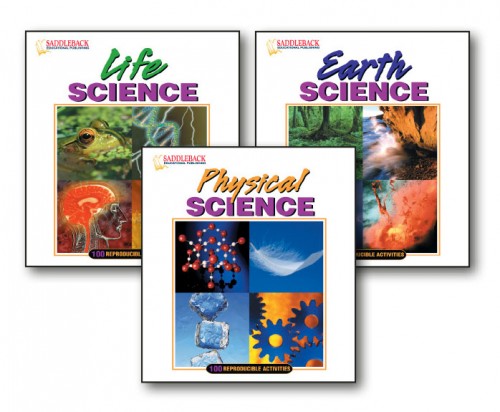Price $119.85
$69.95
Contents
-

Science Binders Set
Earth Science
100 Reproducible Activities
binder
*Not available separately (package component only)
-

Science Binders Set
Life Science
100 Reproducible Activities
binder
*Not available separately (package component only)
-

Science Binders Set
Physical Science
100 Reproducible Activities
binder
*Not available separately (package component only)
- Angiosperms and Gymnosperms
- Using a Classification Key
- Animal Cell
- Bacteria
- Carbohydrates, Lipids, Proteins, Nucleic Acids
- Cell Functions
- Characteristics of Life
- Comparing Fish, Amphibians, and Reptiles
- Comparing Kingdoms
- Comparing Vertebrate Hearts
- Digestive System
- Ferns
- Fishes
- Food Pyramid and Nutrition
- Genetics of Blood Types
- Insects
- Invertebrates vs. Vertebrates
- Levels of Organization
- Life Cycle of a Gymnosperm
- Meiosis
- Monocots and Dicots
- Mosses, Liverworts, and Hornworts
- Protein Synthesis
- Protists and Diseases—Malaria
- Reproduction in Fungi
- Reptiles
- Respiration
- Roots, Stems, and Leaves
- Segmented Worms
- Sponges
- Cenozoic Era
- Comparing Types of Rocks
- Creating a Station Model
- Eclipses
- Formation of Coal
- Fronts
- Glacial Landforms
- Global Heat Budget
- How Minerals Form
- Identifying Minerals
- Igneous Rocks
- Land Features Associated with a River
- Life in the Open Ocean
- Locating the Epicenter of An Earthquake
- Location of Volcanoes
- Mass Movements
- Mesozoic Era
- Metamorphic Rocks
- Ocean Habitats
- Reading a Weather Map
- Sedimentary Rocks
- Severe Weather
- Soil Horizons
- The Solar System
- Space Exploration
- Structure of a Volcano
- Structure of the Sun
- Types of Fossils
- Water Use in the Home
- Waves
- Acceleration
- Calculating Wave Speed
- Changes of State
- Color
- Comparing Acids and Bases
- Convex Lenses
- Covalent Bonds
- Density
- Electric Charges
- Fixed and Movable Pulleys
- Heat Engines
- Hydrocarbons
- Ionic Bonds
- Kinetic and Potential Energy
- Naming Acids and Bases
- Naming Ionic Compounds
- Neutralization and Salts
- Newton’s First Law of Motion
- Ohm’s Law
- Pascal’s Principle
- Properties of Waves
- Simple Machines
- Solids, Liquids, and Gases
- Solubility Curves
- Strength of Acids and Bases
- The Combined Gas Law
- Types of Levers
- Types of Waves
- Wave Interference
- Wet Cell and Dry Cell Batteries
-

Science Binders Set
Earth Science
100 Reproducible Activities
binder
*Not available separately (package component only)
-

Science Binders Set
Life Science
100 Reproducible Activities
binder
*Not available separately (package component only)
-

Science Binders Set
Physical Science
100 Reproducible Activities
binder
*Not available separately (package component only)
- Copyright 2006

 Proud to be Canadian
Proud to be Canadian
